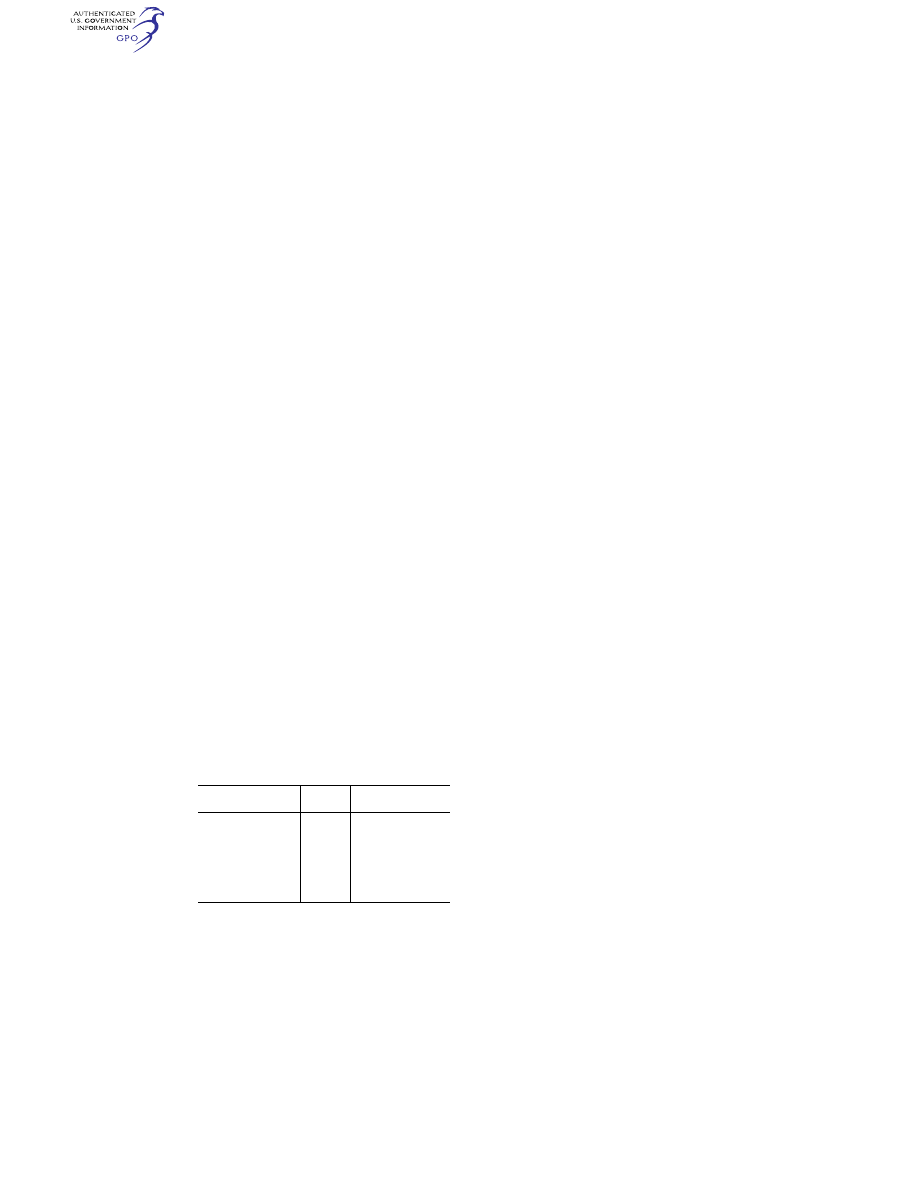
247
Federal Aviation Administration, DOT
§ 25.427
(c)
Servo tabs. Servo tabs must be de-
signed for deflections consistent with
the primary control surface loading
conditions obtainable within the pilot
maneuvering effort, considering pos-
sible opposition from the trim tabs.
§ 25.415
Ground gust conditions.
(a) The flight control systems and
surfaces must be designed for the limit
loads generated when the airplane is
subjected to a horizontal 65-knot
ground gust from any direction while
taxiing and while parked. For airplanes
equipped with control system gust
locks, the taxiing condition must be
evaluated with the controls locked and
unlocked, and the parked condition
must be evaluated with the controls
locked.
(b) The control system and surface
loads due to ground gust may be as-
sumed to be static loads, and the hinge
moments H must be computed from the
formula:
H = K (1/2)
r
o
V
2
c S
Where—
K = hinge moment factor for ground gusts
derived in paragraph (c) of this section;
r
o
= density of air at sea level;
V = 65 knots relative to the aircraft;
S = area of the control surface aft of the
hinge line;
c = mean aerodynamic chord of the control
surface aft of the hinge line.
(c) The hinge moment factor K for
ground gusts must be taken from the
following table:
Surface K
Position of
controls
(1) Aileron ....................
0 .75 Control column locked
or lashed in mid-po-
sition.
(2) Aileron ....................
*
±
0 .50 Ailerons at full throw.
(3) Elevator ..................
*
±
0 .75 Elevator full down.
(4) Elevator ..................
*
±
0 .75 Elevator full up.
(5) Rudder ....................
0 .75 Rudder in neutral.
(6) Rudder ....................
0 .75 Rudder at full throw.
* A positive value of K indicates a moment tending to de-
press the surface, while a negative value of K indicates a mo-
ment tending to raise the surface.
(d) The computed hinge moment of
paragraph (b) of this section must be
used to determine the limit loads due
to ground gust conditions for the con-
trol surface. A 1.25 factor on the com-
puted hinge moments must be used in
calculating limit control system loads.
(e) Where control system flexibility
is such that the rate of load applica-
tion in the ground gust conditions
might produce transient stresses appre-
ciably higher than those corresponding
to static loads, in the absence of a ra-
tional analysis substantiating a dif-
ferent dynamic factor, an additional
factor of 1.6 must be applied to the con-
trol system loads of paragraph (d) of
this section to obtain limit loads. If a
rational analysis is used, the addi-
tional factor must not be less than 1.2.
(f) For the condition of the control
locks engaged, the control surfaces, the
control system locks, and the parts of
any control systems between the sur-
faces and the locks must be designed to
the resultant limit loads. Where con-
trol locks are not provided, then the
control surfaces, the control system
stops nearest the surfaces, and the
parts of any control systems between
the surfaces and the stops must be de-
signed to the resultant limit loads. If
the control system design is such as to
allow any part of the control system to
impact with the stops due to flexi-
bility, then the resultant impact loads
must be taken into account in deriving
the limit loads due to ground gust.
(g) For the condition of taxiing with
the control locks disengaged, or where
control locks are not provided, the fol-
lowing apply:
(1) The control surfaces, the control
system stops nearest the surfaces, and
the parts of any control systems be-
tween the surfaces and the stops must
be designed to the resultant limit
loads.
(2) The parts of the control systems
between the stops nearest the surfaces
and the flight deck controls must be
designed to the resultant limit loads,
except that the parts of the control
system where loads are eventually re-
acted by the pilot need not exceed:
(i) The loads corresponding to the
maximum pilot loads in § 25.397(c) for
each pilot alone; or
(ii) 0.75 times these maximum loads
for each pilot when the pilot forces are
applied in the same direction.
[Amdt. 25–141, 79 FR 73468, Dec. 11, 2014]
§ 25.427
Unsymmetrical loads.
(a) In designing the airplane for lat-
eral gust, yaw maneuver and roll ma-
neuver conditions, account must be
taken of unsymmetrical loads on the
VerDate Sep<11>2014
09:06 Jun 28, 2024
Jkt 262046
PO 00000
Frm 00257
Fmt 8010
Sfmt 8010
Y:\SGML\262046.XXX
262046
jspears on DSK121TN23PROD with CFR
